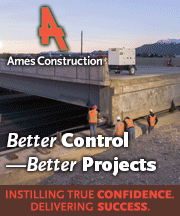
More Best Practices are Even Better Practices
Best Practices are a widely embraced tool for maximizing the implementation of industry knowledge. How can practitioners in any field stay up to date, let alone innovate, without a central source for universally accepted practices? When DBIA published its Universal Best Practices in February of 2014, the publication identified practices with two characteristics, 1) they were written to be universal in applicability and 2) they were important enough to directly affect project performance. When implemented, regardless of sector, these practices would positively impact the performance of the project and the project team. But to take the next step in improving our best practices, and to acknowledge the great diversity between design-build project sectors, DBIA chose to create accompanying best practices for the transportation, water/wastewater and federal sectors.
Have you heard? IQ now comes digital!
View this article in the digital version of our magazine by clicking here!
Each of the sector-specific best practices, are intended for use with Universal Best Practices to Design-Build Done RightTM. As separate supplements to the universal best practices, each sector-specific best practice has a different focus and highlights sector-specific aspects of design-build project delivery which makes them stand out. For example, the transportation best practices identified five key elements that impact the delivery of a design-build project, and recommended practices to address each of them, while the federal and water best practices took a more general approach to identify techniques to maximize delivery and the utility of projects. According to Jim Avitabile, P.E., DBIA who serves as Strategic Initiatives Leader for RS&H and as Chair of DBIA’s Transportation Markets Committee, “In our internal discussions and from the industry feedback, ATCs, environmental permitting, Right-of-Way, and management of utilities, emerged as crucial components of any transportation project. We have addressed these topics in our Best Practices and will keep these areas of concern at the center of our work. These topics are applicable to any project and help make the best practices relevant.”

Many of the differences between design-build sectors are due to the differing regulatory landscapes in which these projects operate. The federal best practices identify key strategies for projects procured under the Federal Acquisition Regulation (FAR) and U.S. Office of Management and Budget rules. While the typical water/wastewater project is procured under local law, which is often times subject to diverse laws and regulations placed on them by state and federal entities. In fact, the diversity of laws was even among the reasons for undertaking the task. According to Craig Unger, “One of the primary purposes of the new Federal Sector document was to specifically reference the Federal Acquisition Regulation (FAR) citations and/or other Federal governing authorities, such as the Office of Management and Budget (OMB), the Office of Federal Procurement Policy (OFPP), etc. to help contracting officers and acquisition teams feel more comfortable with the process and guide them in the execution of Design-Build Done RightTM.”
A sentiment echoed by Douglas Herbst, Collaborative Project Delivery Advisor at Freese & Nichols, Inc., and one of the chief authors of the water/wastewater best practices, when he reflected that, “procurement authority can be complex and affected by state statutes, local ordinances and policies. Adding to this, local owners have limited capital programs and are heavily reliant on outside advisors for project development assistance.” When asked what you can expect to learn from these best practices Herbst said, “Owners need to take the time to objectively assess their program and project needs and the organization before deciding to use design-build. What we have produced here is not only a guide to key recommendations for implementing Design-Build Done RightTM, but a model that allows owners to look into the entire process and determine if design-build is right for them.”
While each document has its own focus, they all maintained a similar structure. If you open any of the three supplemental best practices today, you will find three primary sections that organize the practices – 1) Procuring Design-Build Services, 2) Contracting for Design-Build Services, and 3) Executing the Delivery of Design-Build Projects. According to DBIA’s Executive Director/CEO Lisa Washington, CAE, “We found the structure of the Universal Best Practices to be helpful for guiding the reader to the relevant recommendations for any stage of a project, which is why we maintained the structure throughout all three of the supplemental best practices.”
“We are so thankful for all the hard work and brainpower that went into each and every one of these best practices. We had so many contributors and industry thought leaders involved with these best practices and the end product is evidence of that,” Washington added. And although in some sense these practices are finished, in another sense they are just beginning. We are still accepting industry feedback and plan to continue to do so over the life of the documents. As design and construction industry is ever changing, so to is Design-Build Done RightTM.
To view our best practices, click here!
<< DBIA P3 Primer is here! | 2016: A Breakout Year for DB >>
Related Stories:
Practicing What We Preach: Hiring Using DBIA Best Practices








